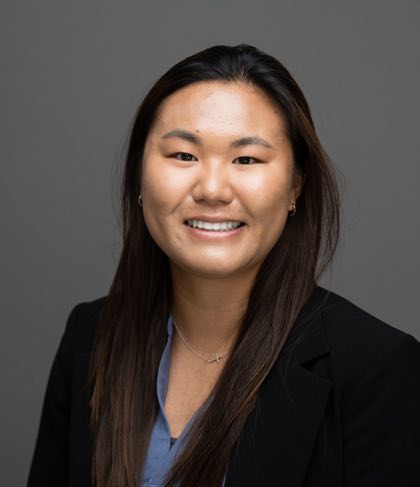Embrace perplexity
By Allison Chau | TLT Scholarship Essay January 2024
Since there are few studies on the tribological properties of photo-switchable hydrogels, there are many opportunities for exploration and growth within this field.
Jeanie S. McCoy Scholarship
The Jeanie S. McCoy Scholarship is awarded annually to recognize female college and high school students pursuing careers in tribology. This scholarship started in 2019, administered by the STLE Presidential Council, that was created to honor STLE Life Member Jeanie McCoy, who was a member of STLE for more than 66 years, joining in the early 1950s when the lubrication industry was clearly male dominated. McCoy passed away in July 2019.
The 2023 recipient is Allison Chau, a student at University of California, Santa Barbara.
As a requirement for receiving the McCoy scholarship, students must submit an essay for publication in TLT discussing their goals, plans and interests in pursuing a future career in the field. For more information about the scholarship, visit www.stle.org.

Allison Chau
My high school physics teacher’s favorite saying was “embrace perplexity.” He would enthusiastically declare this whenever my classmates and I were stuck on a difficult problem. And while I never quite absorbed his unbridled enthusiasm for physics, I did, in fact, pick up his excitement for learning. That is why I have instinctively adopted this motto in my academic journey, as I have never shied away from difficulty but rather gravitated toward it. This mindset has propelled me to pursue a doctorate degree in materials engineering, which combines physics, chemistry and engineering principles to examine materials at the microscopic level to identify how their microstructure influences their macroscopic properties.
I joined the lab of STLE member professor Angela Pitenis at University of California, Santa Barbara, because I was intrigued by her research on the tribology and mechanics of biological and bioinspired materials. There are three main research emphases in the lab: 1.) synthesis and characterization of synthetic hydrogel systems with tunable mechanical and tribological properties, 2.) development and characterization of platforms for three-dimensional cell culturing and 3.) the study of interfacial phenomena at biological interfaces. My research falls within the first category as I study the tribological behavior of hydrogels, which are three-dimensional chemically crosslinked networks of hydrophilic polymer chains swollen in water.
Hydrogel mechanics and swelling are often tuned via external stimuli such as temperature and pH, but there is an increased need for bio-orthogonality to improve the biocompatibility of these stimuli-responsive hydrogels. Recently, light has been used to control the swelling kinetics of hydrogels through the incorporation of photo-responsive molecules into the network, resulting in light-induced actuation and bending. These photochromic molecules, often derivatives of water-soluble spiropyran, isomerize in response to light irradiation and exchange between the hydrophilic merocyanine (MC) (ring-open) form to the hydrophobic spiro (SP) (ring-closed) form once exposed to visible light, resulting in bulk hydrogel shrinking. However, the tribological properties (e.g., friction and lubrication) of these photo-switchable hydrogels remain largely unknown as well as the optimal conditions needed to tune the friction coefficient.
In my work, spiropyran-methacrylate (SP-MA) was conjugated with
N-isopropylacrylamide (NIPAAm) and crosslinked with
N,N’-methylenebisacrylamide (MBAm) to form a copolymerized hydrogel network (p(NIPAAm-co-SP)). The SP-MA concentration and solvent conditions were varied to observe the effects on the friction coefficient, swelling and elastic modulus of the hydrogel. To ensure that the SP-MA started in the merocyanine form (hydrophilic), the gels were equilibrated in the dark overnight. A 470 nm light source was used to irradiate the hydrogels and drive the SP-MA to the SP form, and the elastic modulus and friction coefficient of the gels before and after irradiation were compared using a custom-built microtribometer. Initial results indicate a five-fold increase in friction coefficient after irradiation with a minimal increase in elastic modulus.
I anticipate that this research will be helpful for applications that require tunable tribological properties or surface patterning such as soft robotics, haptics and cell scaffolding. Since there are few prior studies on the tribological properties of photo-switchable hydrogels, there are many opportunities for exploration and growth within this field. The optimal conditions (e.g., polymer and crosslinker concentration, SP-MA concentration, solution pH, polymerization conditions, irradiation time) needed to obtain a wide range of tribological and mechanical properties still need to be established. Additionally, there is opportunity to investigate different water- soluble spiropyran derivatives that have varying photo-switching kinetics and irradiation conditions, which would provide an even wider range of tunability for these hydrogels. While I am still unsure of where my path will take me after graduation, I will continue to embrace perplexity and be on the lookout for tribological problems that need to be solved.
You can reach Allison Chau at achau@ucsb.edu.